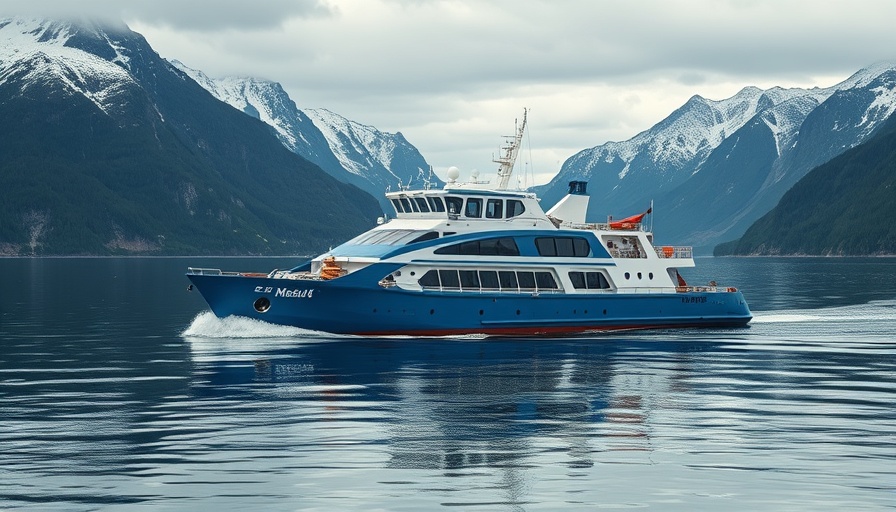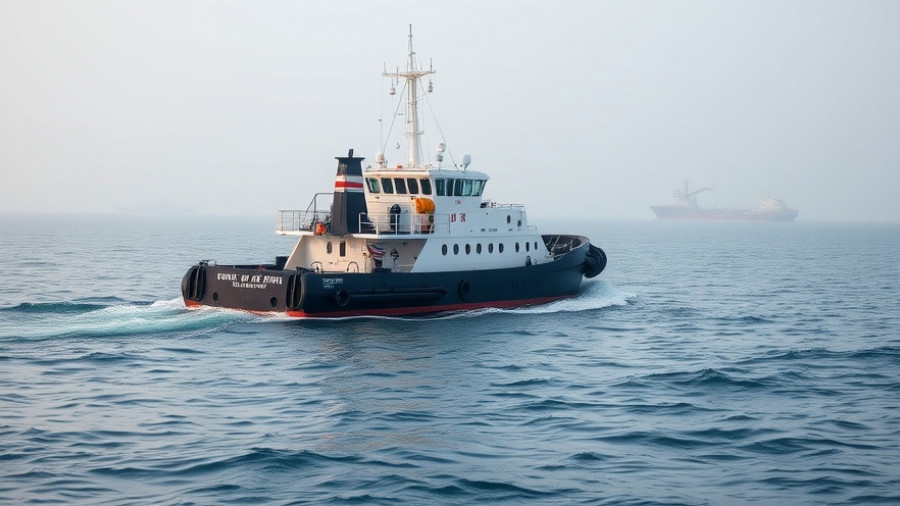
Bernhard Schulte's Innovative Second CSOV: Windea Clausius
On September 4, 2025, Bernhard Schulte Offshore (BSO) officially welcomed its latest addition to the maritime fleet, the Windea Clausius. This Commissioning Service Operation Vessel (CSOV), constructed by Ulstein Verft in Norway, symbolizes a significant development in the offshore energy sector, designed explicitly for enhanced operational efficiency and environmental sustainability.
Revolutionizing Offshore Operations with Cutting-Edge Design
The Windea Clausius isn’t just another vessel; it features Ulstein's remarkable TWIN X-STERN design, which plays a crucial role in minimizing vessel motion during operation. This design is vital for safe gangway operations, an essential factor for crew welfare and operational efficiency. The dual sterns, complemented by azimuth propellers at both the bow and the stern, amplify its performance, particularly in Dynamic Positioning (DP) scenarios. The result? A vessel engineered for low-carbon operations and optimized for both operational and maintenance tasks.
Comfort Meets Functionality: Living Conditions Aboard
The Windea Clausius boasts up to 111 cabins, allowing it to comfortably accommodate 132 personnel. Each cabin features windows, ensuring that employees can enjoy natural light and a view of their surroundings while stationed offshore. This thoughtful design enhances morale and mental well-being for the teams operating in often challenging and remote environments. The centrally located walk-to-work gangway and height-adjustable elevator tower demonstrate the vessel's commitment to functionality in crew transfers, further aligning with the demands of modern offshore energy projects.
Meeting Industry Demands with Safety and Sustainability
This vessel’s hybrid battery propulsion and readiness for methane fuel signify a shift toward environmentally responsible practices in the offshore industry. As the demand for renewably sourced energy continues to rise, ships like the Windea Clausius are at the forefront of this evolution. Ulstein Verft's Managing Director, Lars Lühr Olsen, highlighted this vision as he expressed pride in contributing to the green transition within the maritime sector. It’s a clear acknowledgment that the future of shipbuilding must align with sustainability goals while maintaining high-performance standards.
Insights from the Construction Process and Collaborations
The construction of the Windea Clausius heralds another milestone in the fruitful collaboration between Bernhard Schulte Offshore and Ulstein Verft. The synergy between these two companies has always aimed at advancing maritime innovation. The first vessel in this series, the Windea Curie, delivered in June 2025, has already set remarkable benchmarks in offshore support operations. This ongoing collaboration signifies not just a business relationship but a shared vision for a more sustainable maritime industry.
What’s Next for the Offshore Energy Sector?
As we look ahead, the advancements brought forth by innovative vessels like the Windea Clausius set a precedent for upcoming projects in the offshore energy space. The 3D motion-compensated crane capable of lifting up to five tonnes further indicates a readiness to tackle more significant challenges and opportunities ahead. Moving forward, shipbuilders and operators alike must embrace a blend of sustainability, safety, and performance to thrive in the competitive offshore market.
Engaging with the Momentum in Offshore Renewable Energy
In a world increasingly focused on environmental sustainability, the offshore energy sector is crucial. The delivery of the Windea Clausius offers a glimpse into the future, where the maritime industry is not only a service provider but a steward of technology and innovation driving the green transition. Adopting such vessels is a call-to-action for all stakeholders—investors, engineers, and operators—to rethink their strategies towards sustainability.
Staying informed about advancements in maritime technology and sustainability practices is essential for industry professionals. Explore how innovations like Windea Clausius can influence your approach to offshore projects!
 Add Row
Add Row  Add
Add 




Write A Comment